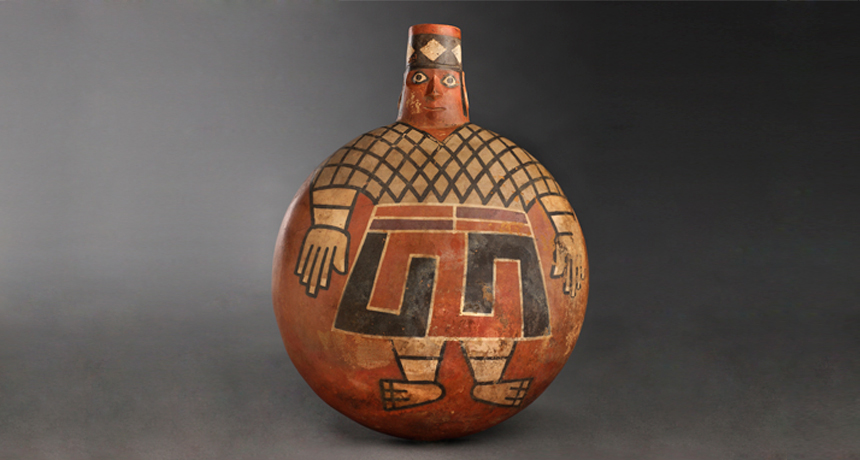Pre-Inca empire tomb found untouched in Peru
Gold jewelry, bronze axes and dozens of bodies uncovered in Wari empire ceremonial room

PRE-INCAN GAZE A painting of a Wari lord decorates this 1,200-year-old ceramic flask, which archaeologists found with the body of a queen in a tomb in Peru.
Daniel Giannoni







